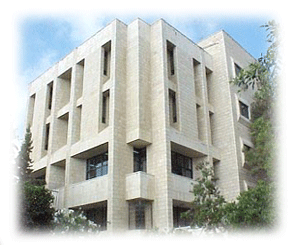|
During the month of Ramadan Muslims
are commanded to fast, meaning abstain from food, drink
and other sensual pleasures. Fasting during Ramadan is
one of the five pillars of Islam:
|
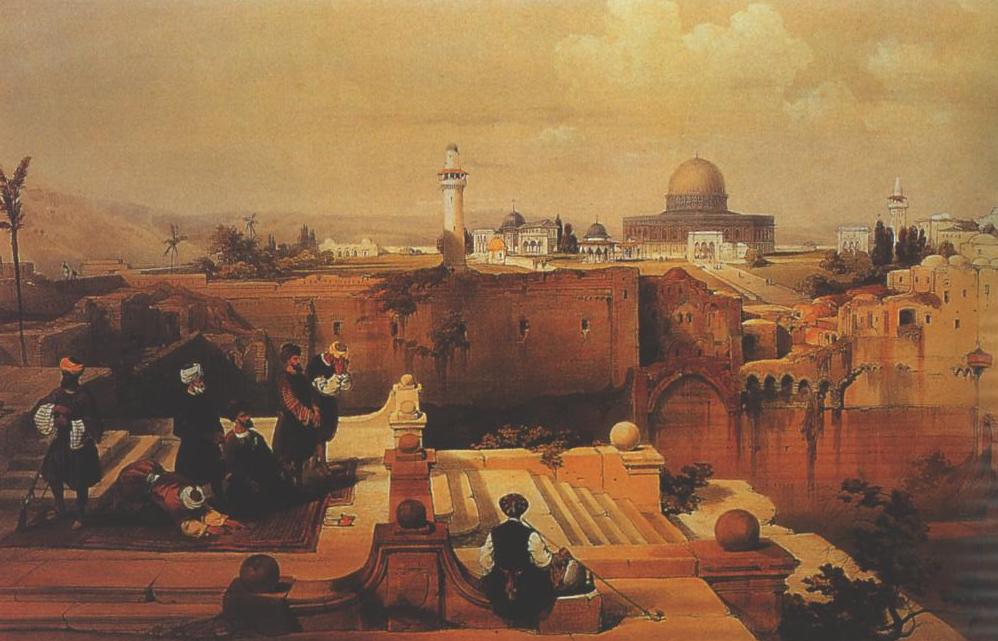
The Dome of the Rock as seen by David
Roberts |
1. Shahada ( affirmation of faith);
2. Salat (prayers); 3. Zakat (almsgiving); 4.Hajj
(pilgrimage to Mecca); and, 5. Siyam (fasting).
The Arabic word ramadan is derived
from an Arabic root ramida, meaning intensive scorching
heat and dryness.
Fasting means not only abstaining from
food, drink and sexual intercourse during the day but
also restraining the tongue, the eye, the ear, the heart
and mind from indulging in unlawful acts that render the
fast worthless. The prophet Muhammad said: ”Whoever
observes fast during the month of Ramadan out of sincere
faith, and hoping to attain Allah’s rewards, all his
past sins will be forgiven”. (Sahih Al-Bukhari, Book of
Fasting).
During the month of Ramadan,
paradise’s doors are opened, hell’s doors are closed and
satans are chained. So, by observing
fasting, a devout Muslim is offered a golden opportunity
to reap worldly and divine rewards through self-control,
devotion to Allah and spiritual self-reflection.
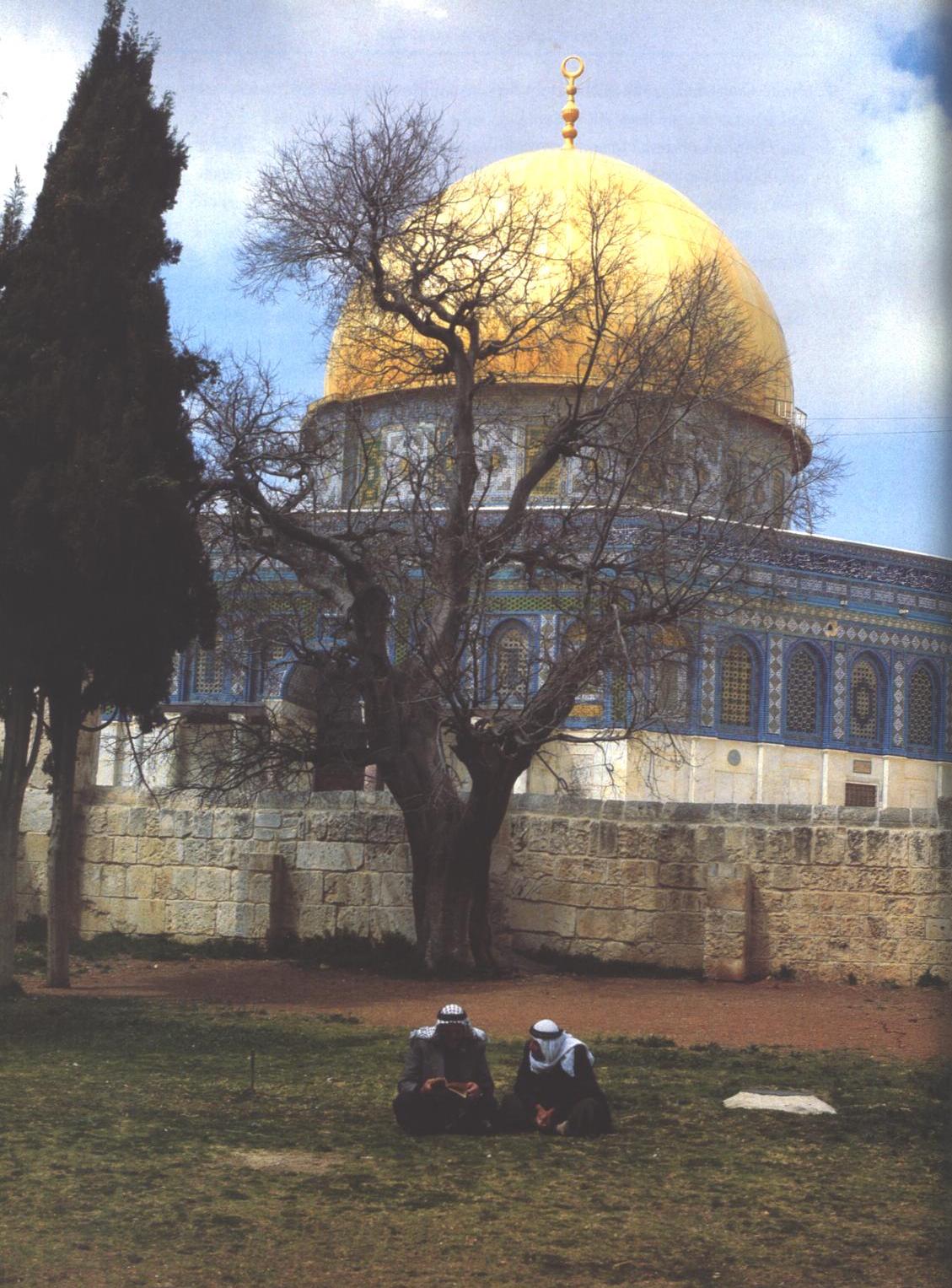 A Muslim can practice self-control
over the body and its desires through communal
praying, doing good deeds, reading the Qur’an,
exercising patience and moderation, sympathizing
with the less fortunate, strengthening family
ties and supplication to Allah. Although these
practices should not be exclusively limited to
the month of Ramadan, the rewards are doubled.
They are religious and spiritual values that
should be an integral part of one’s life. A Muslim can practice self-control
over the body and its desires through communal
praying, doing good deeds, reading the Qur’an,
exercising patience and moderation, sympathizing
with the less fortunate, strengthening family
ties and supplication to Allah. Although these
practices should not be exclusively limited to
the month of Ramadan, the rewards are doubled.
They are religious and spiritual values that
should be an integral part of one’s life.
Among the landmarks of Ramadan are the
revelation of the Qur’an, lailatu l-qadr (night of
destiny/power) and eid el-fitr (feast of
fast-breaking). It is believed that the first verses of
the Qur’an were revealed to the prophet Mohammad through
the archangel Gabriel on one particular night during
Ramadan, which is considered in the Qur’an better than a
thousand months. During this month, angels descend to
witness how people worship and obey Allah, to show their
deep love for the believers and to increase their
rewards. Muslims gather in mosques to observe or seek
this blessed night in devotion, recitation of the Qur’an
and supplications. The end of Ramadan is marked by eid
el-fitr, which extends for three days, during which
people wear holiday apparel, especially kids, attend a
communal sunrise prayer, congratulate each other, visit
cemeteries and offer gifts or money to children.
|
|
Ramadan has plenty of medical, social
and psychological benefits. First, it is believed that
fasting helps lower blood pressure, cholesterol and
blood sugar. Second, family and community bonds are
generally strengthened during Ramadan. Families and
friends exchange invitations to Iftar, parties, prepare
collective Itfar, make home visits and socialize.
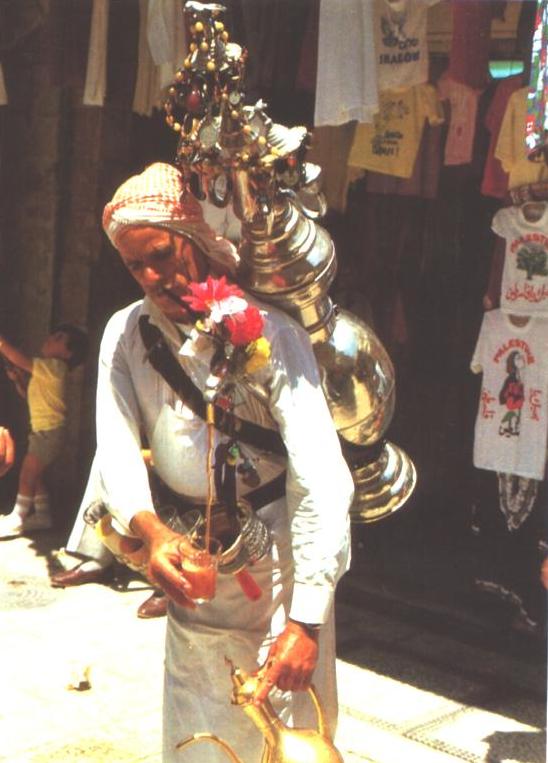
A street vendor selling
carob |
|

The fruit of a date palm |
How does a Muslim spend a typical
Ramadan day? Fasting is broken just after sunset. It
coincides with the evening prayer. In the past , a cannon
was fired to announce the end of the fast. Nowadays this
announcement is made on radio and TV. With the Iftar
meal people eat dates and drink liquorice, carob or
kamar ed-din (apricot) juice. After the meal people
usually go to the mosque to perform the congregational
Isha' (night) and taraweeh (non-mandatory) prayers.
They return home and have the typical Ramadan dessert,
katayef (a pancake stuffed with walnuts or white cheese,
folded and dipped in syrup). Some visit relatives and
friends to socialize.
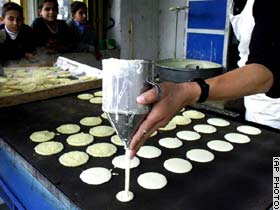
Preparing the duff of Qatayef |
|
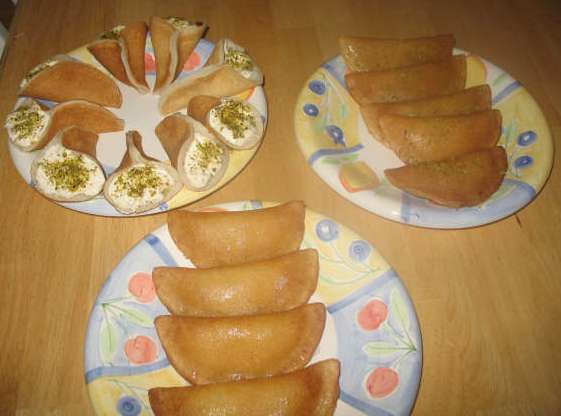
Stuffed Qatayef with nuts and white cheese |
Eid
Mubarak |
|
Sources: |
|
|
- This
week in Palestine Issue No. 90, October 2005:
"Ramadan: The Holy Month of Mercy and
Forgiveness", by Dr. Aziz Khalil |
|
|
- Art
and History of Jerusalem, by Bonechi and
Steimatzky, 1996 |
|
|
-
Jerusalem of the Heavens, by Milner Moshe, Meiri
Press, 1993 |
|
|
-
Jerusalem Man and Stone, Modan Publishing House,
1990 |
|
